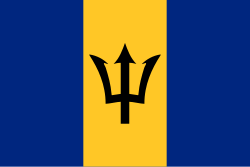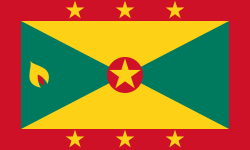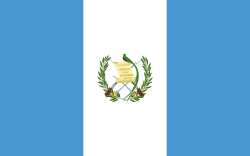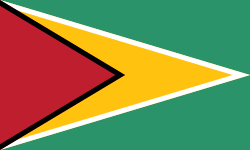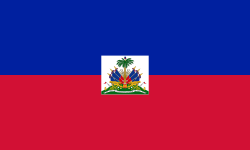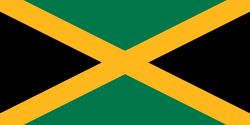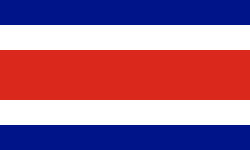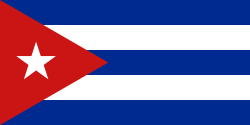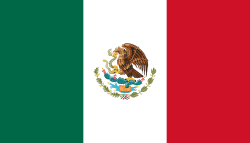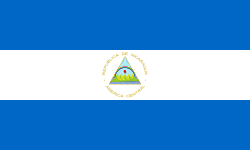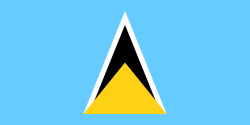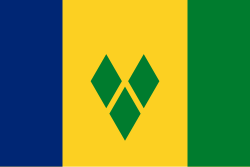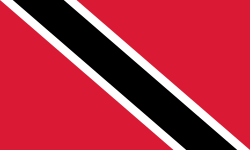Středoamerické a karibské hry

Středoamerické a karibské hry (španělsky Juegos Centroamericanos y del Caribe, anglicky Central American and Caribbean Games) jsou významnou sportovní událostí v karibském a středoamerickém regionu, která se koná vždy jednou za 4 roky (podobně jako Olympijské hry).
Myšlenka uspořádat regionální „malé Olympijské hry“ se zrodila během Letní olympiády 1924 v Paříži. První hry se uskutečnily v roce 1926 za účasti sportovců z Mexika, Kuby a Guatemaly. První 3 ročníky her (1926, 1930, 1935) byl jejich oficiální celý název Středoamerické hry. Od ročníku 1938 se název změnil na současný Středoamerické a karibské hry, aby zohlednil přistoupení karibských států.
Hry jsou pořádány Středoamerickou a karibskou sportovní organizací (španělsky Organización Deportiva Centroamericana y del Caribe, zkratka ODECABE). Her pořádaných v roce 2018 se účastnilo 37 zemí .
 Americké Panenské ostrovy
Americké Panenské ostrovy Antigua a Barbuda
Antigua a Barbuda Aruba
Aruba Bahamy
Bahamy Barbados
Barbados Belize
Belize Bermudy
Bermudy Britské Panenské ostrovy
Britské Panenské ostrovy Curaçao
Curaçao Dominika
Dominika Dominikánská republika
Dominikánská republika Francouzská Guyana
Francouzská Guyana Grenada
Grenada Guadeloupe
Guadeloupe Guatemala
Guatemala Guyana
Guyana Haiti
Haiti Honduras
Honduras Jamajka
Jamajka Kajmanské ostrovy
Kajmanské ostrovy Kolumbie
Kolumbie Kostarika
Kostarika Kuba
Kuba Martinik
Martinik Mexiko
Mexiko Nikaragua
Nikaragua Panama
Panama Portoriko
Portoriko Salvador
Salvador Surinam
Surinam Svatá Lucie
Svatá Lucie Svatý Kryštof a Nevis
Svatý Kryštof a Nevis Svatý Martin (nizozemská část)
Svatý Martin (nizozemská část) Svatý Vincenc a Grenadiny
Svatý Vincenc a Grenadiny Trinidad a Tobago
Trinidad a Tobago Turks a Caicos
Turks a Caicos Venezuela
Venezuela
Chronologický přehled
| Pořadí her | Rok | Místo konání | Datum konání | Počet zúčastněných zemí | Počet sportů | Počet sportovců |
|---|---|---|---|---|---|---|
| I. | 1926 | 12. listopad – 2. prosinec | 3 | 8 | 269 | |
| II. | 1930 | 15. březen – 5. duben | 8 | 10 | 632 | |
| III. | 1935 | 16. březen – 5. duben | 9 | 14 | 741 | |
| IV. | 1938 | 5. únor – 24. únor | 10 | 18 | 1216 | |
| V. | 1946 | 8. prosinec – 28. prosinec | 13 | 19 | 1540 | |
| VI. | 1950 | 28. únor – 12. březen | 14 | 19 | 1390 | |
| VII. | 1954 | 5. březen – 20. březen | 12 | 19 | 1321 | |
| VIII. | 1959 | 6. leden – 15. leden | 12 | 17 | 1150 | |
| IX. | 1962 | 15. srpen – 28. srpen | 15 | 16 | 1559 | |
| X. | 1966 | 11. červenec – 25. červenec | 18 | 17 | 1689 | |
| XI. | 1970 | 28. únor – 13. březen | 20 | 16 | 2095 | |
| XII. | 1974 | 27. únor – 12. březen | 23 | 18 | 2052 | |
| XIII. | 1978 | 7. červenec – 28. červenec | 21 | 19 | 2605 | |
| XIV. | 1982 | 7. srpen – 18. srpen | 22 | 24 | 2799 | |
| XV. | 1986 | 24. červen – 5. červenec | 26 | 25 | 2963 | |
| XVI. | 1990 | 20. listopad – 3. prosinec | 29 | 30 | 4206 | |
| XVII. | 1993 | 19. listopad – 30. listopad | 31 | 32 | 3570 | |
| XVIII. | 1998 | 8. srpen – 22. srpen | 32 | 30 | 4115 | |
| XIX. | 2002 | 19. listopad – 30. listopad | 31 | 37 | 4301 | |
| XX. | 2006 | 15. červenec – 30. červenec | 32 | 41 | 5200 | |
| XXI. | 2010 | 18. červenec – 1. srpen | 31 | 45 | 5204 | |
| XXII. | 2014 | 14. listopad – 30. listopad | 31 | 36 | 5707 | |
| XXIII. | 2018 | 19. červenec – 3. srpen | 37 | 36 | 5854 | |
| XXIV. | 2023 | 23. červen – 8. červenec | 38 | |||
| XXV. | 2026 |
Externí odkazy
 Obrázky, zvuky či videa k tématu Středoamerické a karibské hry na Wikimedia Commons
Obrázky, zvuky či videa k tématu Středoamerické a karibské hry na Wikimedia Commons
Média použitá na této stránce
The flag of Aruba
The flag of Curaçao is a blue field with a horizontal yellow stripe slightly below the midline and two white, five-pointed stars in the canton. The geometry and colors are according to the description at Flags of the World.
The flag of the Dominican Republic has a centered white cross that extends to the edges. This emblem is similar to the flag design and shows a bible, a cross of gold and 6 Dominican flags. There are branches of olive and palm around the shield and above on the ribbon is the motto "Dios,Patria!, Libertad" ("God, Country, Freedom") and to amiable freedom. The blue is said to stand for liberty, red for the fire and blood of the independence struggle and the white cross symbolized that God has not forgotten his people. "Republica Dominicana". The Dominican flag was designed by Juan Pablo Duarte, father of the national Independence of Dominican Republic. The first dominican flag was sewn by a young lady named Concepción Bona, who lived across the street of El Baluarte, monument where the patriots gathered to fight for the independence, the night of February 27th, 1844. Concepción Bona was helped by her first cousin María de Jesús Pina.
The flag of the Dominican Republic has a centered white cross that extends to the edges. This emblem is similar to the flag design and shows a bible, a cross of gold and 6 Dominican flags. There are branches of olive and palm around the shield and above on the ribbon is the motto "Dios,Patria!, Libertad" ("God, Country, Freedom") and to amiable freedom. The blue is said to stand for liberty, red for the fire and blood of the independence struggle and the white cross symbolized that God has not forgotten his people. "Republica Dominicana". The Dominican flag was designed by Juan Pablo Duarte, father of the national Independence of Dominican Republic. The first dominican flag was sewn by a young lady named Concepción Bona, who lived across the street of El Baluarte, monument where the patriots gathered to fight for the independence, the night of February 27th, 1844. Concepción Bona was helped by her first cousin María de Jesús Pina.
The national and official state flag of Haiti; arms obtained from File:Coat of arms of Haiti.svg. The civil flag can be found at here.
Note: The color selected is «turquoise blue» (the color mentioned in the decree), as defined by Pantone.
Flag of Jamaica. “The sunshine, the land is green, and the people are strong and bold” is the symbolism of the colours of the flag. GOLD represents the natural wealth and beauty of sunlight; GREEN represents hope and agricultural resources; BLACK represents the strength and creativity of the people. The original symbolism, however, was "Hardships there are, but the land is green, and the sun shineth", where BLACK represented the hardships being faced.
Flag of the Turks and Caicos Islands
Autor: PetrohsW, Licence: CC BY-SA 4.0
Secciones parciales del medallero Barranquilla 2018




